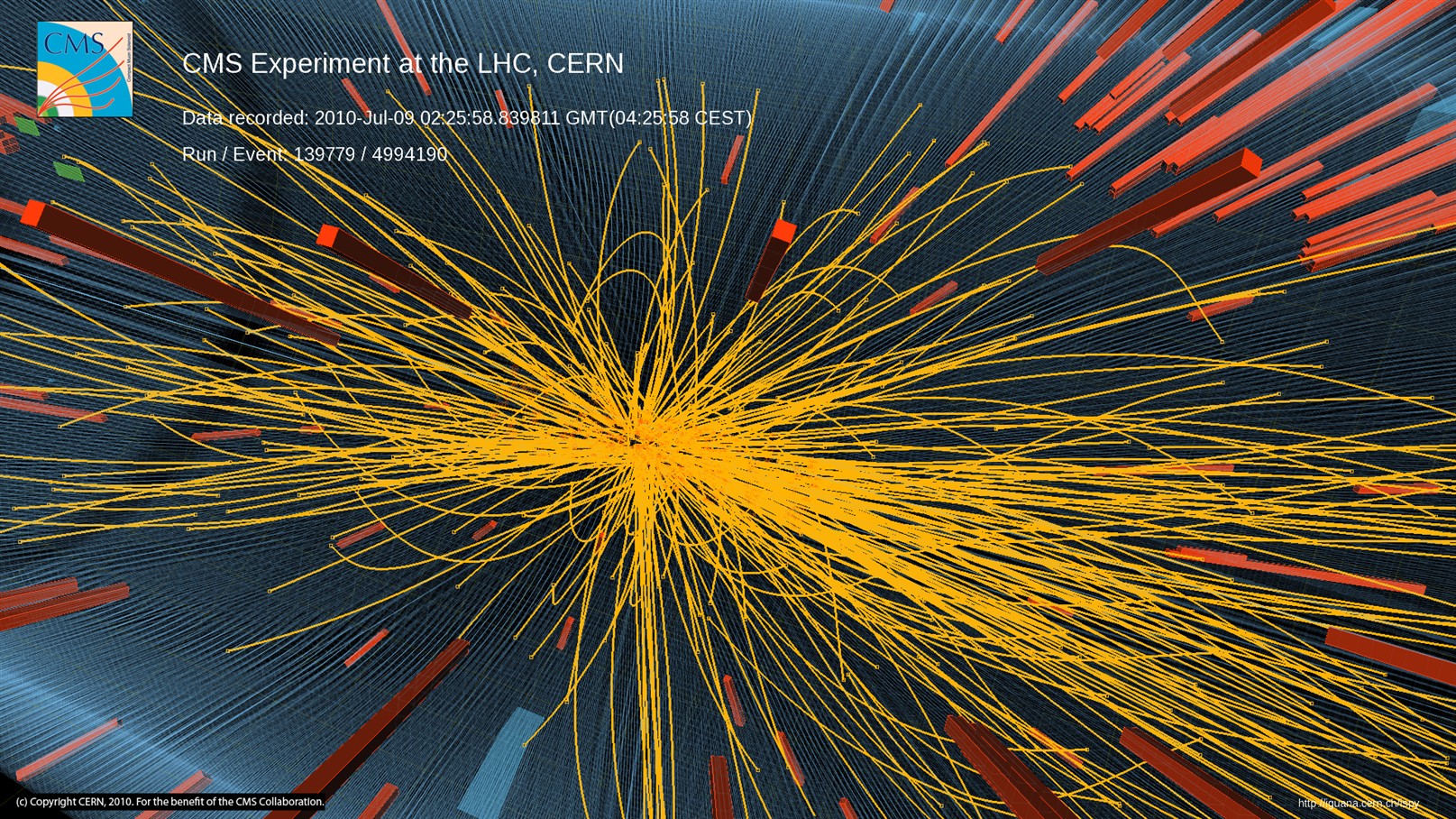New Scientist | Physics & Math | 08 Sept 2010
How to look for supersymmetry under the lamppost at the LHC - P Konar et alTHE world's most powerful particle smasher could start making major discoveries sooner than we thought.
Evidence of supersymmetry (SUSY), a theory that helps solve several cosmological mysteries, as well as exotic new types of matter may emerge at the Large Hadron Collider (LHC) at CERN near Geneva, Switzerland, by the end of the year. That is if certain particles can decay into lighter ones via newly discovered pathways that are relatively easy to spot.
The assumption had been that the LHC would not have smashed enough particles together by December to see clear evidence of (SUSY). This theory, which suggests that every known particle has a "superpartner" or sparticle, could smooth the way for a "grand unified theory" that brings together the fundamental forces of nature. It could also provide an explanation for dark matter.
To find evidence for SUSY, the LHC needs time to amass enough data to see sparticles decaying unambiguously. So the earliest evidence for SUSY was not expected until mid-2011.
Now Konstantin Matchev of the University of Florida in Gainesville and colleagues say we may not need to wait that long.
Typical SUSY models assume heavy superpartners for the gluon and quarks, and a light neutral particle as a candidate for dark matter. But since the true masses of sparticles are uncertain, Matchev's team considered hundreds of possible masses for them, and worked out the routes by which they could decay into lighter objects.
...
Sparticles aren't the only exotic particles that could turn up before the year is out: diquarks and leptoquarks could also be on the menu, say Jesse Thaler of the Massachusetts Institute of Technology and colleagues. These particles appear in grand unified theories, in which the strong, electromagnetic and weak forces merge at high energies.
Thaler describes the diquark as a single particle that has twice the "quarkness" of a single quark. A leptoquark would allow quarks and leptons to transform in ways that have never been observed and that are forbidden under the standard model of particle physics, which accounts for all particles known to date.
...
The Higgs boson, thought to give all other particles mass, tops the Large Hadron Collider's most-wanted list. It is unlikely to be seen before 2013 according to the standard model of particle physics, but exotic physics could allow it to arrive sooner.
Modifications to the LHC will require it to be shut down for all of 2012. By then it will have enough data to see a Higgs with a mass between 160 and 180 gigaelectronvolts - except that results from the Tevatron collider in Batavia, Illinois, combined with the standard model, have already ruled out a Higgs mass above about 160 GeV.
But the LHC could be in luck if there are particles and forces outside the standard model. Then the Higgs could be heavier than 160 GeV and emerge in the early data.
What's more, if heavy "fourth generation" quarks - hints of which have shown up at the Tevatron - exist, the LHC could detect a Higgs with a mass of up to 300 GeV before 2012 ...
The Higgs might also be seen by then if it is lighter than 130 GeV. This could be the case if another particle outside the standard model, the Z-prime, exists as some string theory models predict ...
- arXiv.org > hep-ph > arXiv:1008.2483 > 14 Aug 2010
- Physics Letters B 690(3) 280 (21June 2010) DOI: 10.1016/j.physletb.2010.05.032
arXiv.org > hep-ph > arXiv:0909.5213 > 29 Sep 2009 (v1), 18 Oct 2009 (v2)
- Physical Review D 76(7) 075016 (26 Oct 2007) DOI: 10.1103/PhysRevD.76.075016
arXiv.org > hep-ph > arXiv:0706.3718 > 26 Jun 2007
- Physical Review D 78(5) 055002 (02 Sep 2008) DOI: 10.1103/PhysRevD.78.055002
arXiv.org > hep-ph > arXiv:0801.3456 > 23 Jan 2008 (v1), 02 Sep 2008 (v2)

